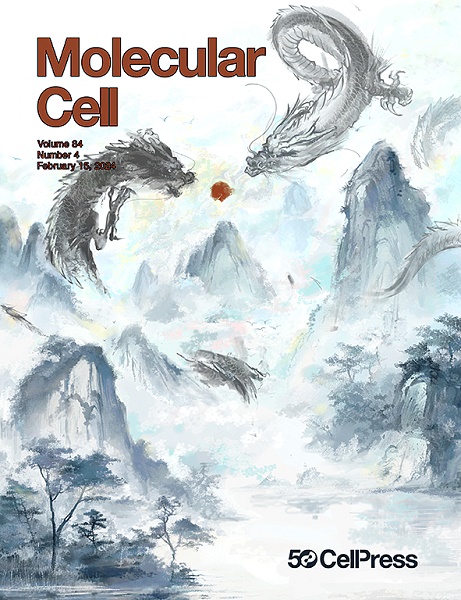A family of bacterial Josephin-like deubiquitinases with an irreversible cleavage mode
IF 14.5
1区 生物学
Q1 BIOCHEMISTRY & MOLECULAR BIOLOGY
引用次数: 0
Abstract
Many intracellular bacteria secrete deubiquitinase (DUB) effectors into eukaryotic host cells to keep the bacterial surface or the enclosing vesicle membrane free of ubiquitin marks. This study describes a family of DUBs from several bacterial genera, including Simkania, Parachlamydia, Burkholderia, and Pigmentiphaga, which is structurally related to eukaryotic Josephin-type DUBs but contains members that catalyze a unique destructive substrate deubiquitination. These ubiquitin C-terminal clippases (UCCs) cleave ubiquitin before the C-terminal diGly motif, thereby truncating the modifier and leaving a remnant on the substrate. By comparing the crystal structures of substrate-bound clippases and a closely related conventional DUB, we identified the factors causing this shift and found them to be conserved in other clippases, including one highly specific for M1-linked ubiquitin chains. This enzyme class has great potential to serve as tools for studying the ubiquitin system, particularly aspects involving branched chains.

具有不可逆裂解模式的细菌约瑟芬样去泛素化酶家族
许多胞内细菌分泌去泛素酶(DUB)效应物进入真核宿主细胞,以保持细菌表面或包裹的囊泡膜无泛素标记。本研究描述了来自几个细菌属的DUBs家族,包括Simkania,副原体,Burkholderia和Pigmentiphaga,它在结构上与真核josephin型DUBs相关,但包含催化独特的破坏性底物去泛素化的成员。这些泛素c端剪切酶(UCCs)在泛素c端diGly基序之前剪切泛素,从而截断修饰子并在底物上留下残余物。通过比较底物结合的剪切酶和密切相关的传统DUB的晶体结构,我们确定了导致这种转变的因素,并发现它们在其他剪切酶中是保守的,包括一个对m1连接的泛素链高度特异性的剪切酶。这类酶具有很大的潜力,可以作为研究泛素系统的工具,特别是涉及支链的方面。
本文章由计算机程序翻译,如有差异,请以英文原文为准。
求助全文
约1分钟内获得全文
求助全文
来源期刊

Molecular Cell
生物-生化与分子生物学
CiteScore
26.00
自引率
3.80%
发文量
389
审稿时长
1 months
期刊介绍:
Molecular Cell is a companion to Cell, the leading journal of biology and the highest-impact journal in the world. Launched in December 1997 and published monthly. Molecular Cell is dedicated to publishing cutting-edge research in molecular biology, focusing on fundamental cellular processes. The journal encompasses a wide range of topics, including DNA replication, recombination, and repair; Chromatin biology and genome organization; Transcription; RNA processing and decay; Non-coding RNA function; Translation; Protein folding, modification, and quality control; Signal transduction pathways; Cell cycle and checkpoints; Cell death; Autophagy; Metabolism.
 求助内容:
求助内容: 应助结果提醒方式:
应助结果提醒方式:


